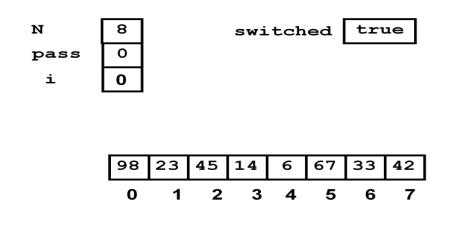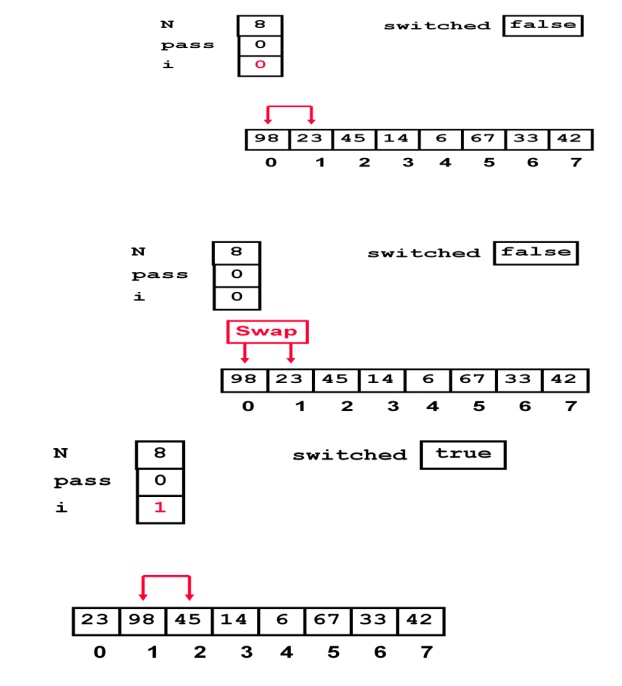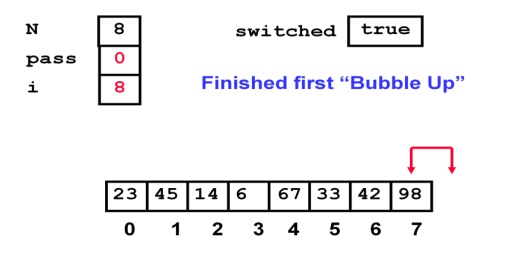Chapter: Programming and Data Structures : Sorting And Searching
Bubble sort
BUBBLE SORT:
Bubble sort is a simple sorting
algorithm. The algorithm starts at the beginning of the data set. It compares
the first two elements, and if the first is greater than the second, it swaps
them.
It continues doing this for each pair of
adjacent elements to the end of the data set. It then starts again with the
first two elements, repeating until no swaps have occurred on the last pass.
Bubble sort can be used to sort a small
number of items (where its inefficiency is not a high penalty). Bubble sort may
also be efficiently used on a list that is already sorted except for a very
small number of elements.
For example, if only one element is not
in order, bubble sort will take only 2n time. If two elements are not in order,
bubble sort will take only at most 3n time.
Bubble Sort Algorithm:
#include<stdio.h>
#include<conio.h>
void
main( )
{
int
a[100];
int
i, j, temp, n ;
printf("how many numbers you want to sort :
\n"); scanf("%d",&n);
printf("Enter %d number values you want to
sort\n", n); for(j=0; j<n; j++)
scanf("%d",&a[j]);
for(j=1;j<n;j++)
{
for(i=0;
i<n; i++)
{
if(a[i]>a[i+1])
{
temp=a[i];
a[i]=a[i+1];
a[i+1]=temp;
}
}
}
printf
( "\n\nArray after sorting:\n") ;
for ( i = 0 ; i <n ; i++ ) printf (
"%d\t", a[i] ) ; getch();
}
Algorithm
Explanation
•
Traverse a collection of elements
– Move from the front to the end
– After the first traversal only the largest value
is correctly placed
– All other values are still out of order
– So we need to repeat this process.
– – If we have N elements… And if each time we bubble an element, we place it in its correct location…
–
Then we repeat
the–1 times“bubble. up” process
– This
guarantees we’ll correctly
place a
•
We can use a Boolean variable (Here it
is switched) to determine if any swapping occurred during the “bubble up.”
•
If no swapping occurred, then we know
that the collection is already sorted.
•
This
Boolean “flag” needs
to be reset
afte
Execution
of Algorithm:
The given input values are

Pass 0

Like wise the iterations will continue
for the Pass 0 with adjacent values comparisons and swapping. Finally after I
pass that pass 0 the list will look as follows..

Now the last element will freeze out. That is it
will not get considered for the next passes. Such that for each passes one
element will get frozen out. The pass will get over if the elements
haven’t swapped for a complete iteration. It
variable. It will be false if swapping not happened.
Efficiency Analysis of Bubble sort:
• One
traversal = move the maximum element at the end
• Traversal
: n –i + 1 operations
• Running
time:
(n –1) + (n –2) +
… + 1 = (n)by applying+1)the summation/ 2formula=.
O(n)
Related Topics